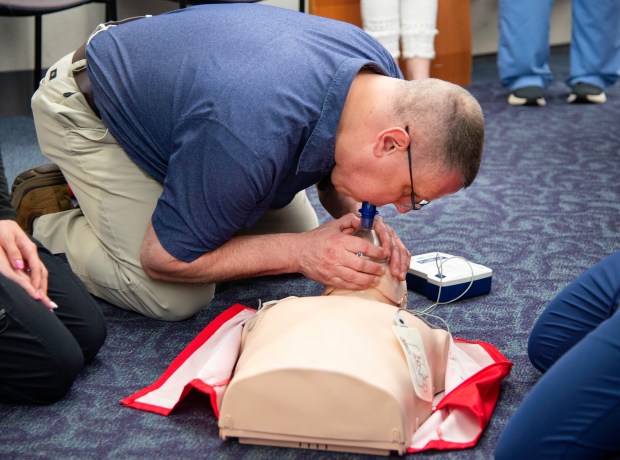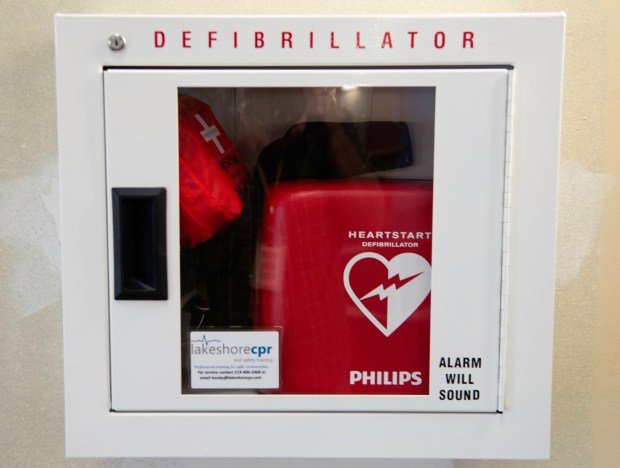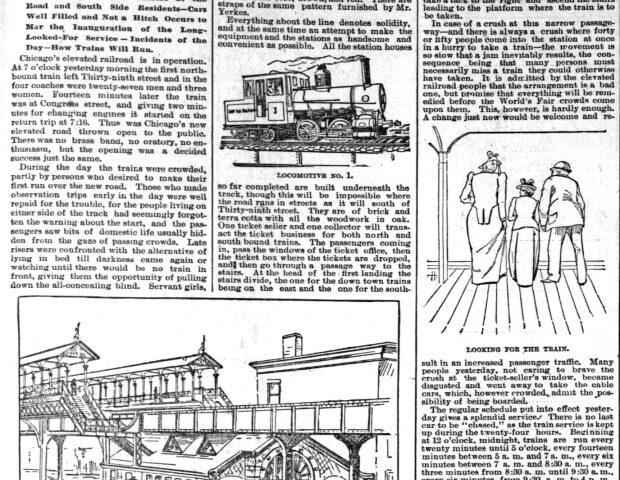With a cardiac emergency drill performed at the Porter County Administration Building Wednesday morning, the Porter County Health Department became the first Heart Safe health department in Indiana.
A little after 10 a.m. the mock emergency began on a dummy lying just inside the double doors to the commissioners chambers. “Someone grab an AED! We need an AED!” shouted Zac Mago Foundation founder Teresa Mago, as she asked for an automated external defibrillator.
“Nobody touch the patient!” commanded Porter County Emergency Preparedness Coordinator John Pisowicz.
“Did someone call 911?” asked County Councilman Greg Simms, D-3rd. Mago began chest compressions while Pisowicz applied defibrillator patches from the AED kit to the dummy’s chest.
A health department staffer in pink scrubs stood by the door and asked, “Does someone want to go out and wait on the ambulance?” Public health nurse Amy Krupa counted for Mago as she performed chest compressions. “28, 29, 30. Good job!”
“Ambulance is here!” someone else called from the rotunda while an automated voice from the AED gave instruction, “Do not touch the patient. Shock advised. All clear.”
Three probationary firefighters from the Valparaiso Fire Department then arrived with a gurney. “What’s going on here?” asked Robert Gutierrez, a probationary firefighter and paramedic.
Simms filled them in and the drill soon ended for a debriefing session.
“Great job to everyone involved,” said Tonya Aerts of Legacy Medical Academy, who serves as Project ADAM Indiana program coordinator. Project ADAM is a national effort to raise awareness of cardiac arrest preparedness.
The Porter County Health Department said the key to surviving a cardiac event is timely CPR and the use of an AED within three minutes. Calling 911, crowd control and having a cardiac emergency response plan, or CERP, are integral to increasing survival rates.

A Project ADAM checklist helps sites prepare by ensuring such steps as clear signage for AED placement, a schedule for AED maintenance, and stocking of a first responder kit. It also offers guidance for developing the CERP, education and drills.
Aerts praised the efforts of staff to stand outside and direct first responders when they arrived. “That’s the most critical thing,” she said. “They might not be familiar with where to go.”
To improve the chances for a successful intervention the county has also moved its AEDs to the wall beside the elevator on every floor.
There are also 15 people in the building on the county’s Cardiac Emergency Response Team, including Simms and Commissioner Barb Regnitz, R-Center. The team was formed in December through Project ADAM and every member is certified in Basic Life Support.
“I think everyone would agree that bystander intervention is critical in a cardiac event,” Aerts said.

The drill serves not only as a practice for county government staff within the Administration Building but also as part of a larger societal effort to demystify AEDs and get the public comfortable with the idea of using them.
Pisowicz said Porter County has AEDs in 90% of its buildings. “The machine completely guides you,” he said. “And not only a professional can use it,” added Porter County nursing supervisor Crystal Coffey.
“We have a tight collaboration with our schools,” she added. “I think we have eight that are Project ADAM-certified,” she said of Portage Township Schools and Duneland School Corporation. Others eager to be certified are encouraged to call her office.
“We’re trying to make that AED as standard as fire extinguishers,” explained Aerts, who said they cost less than a new cell phone.
Shelley Jones is a freelance reporter for the Post-Tribune.




